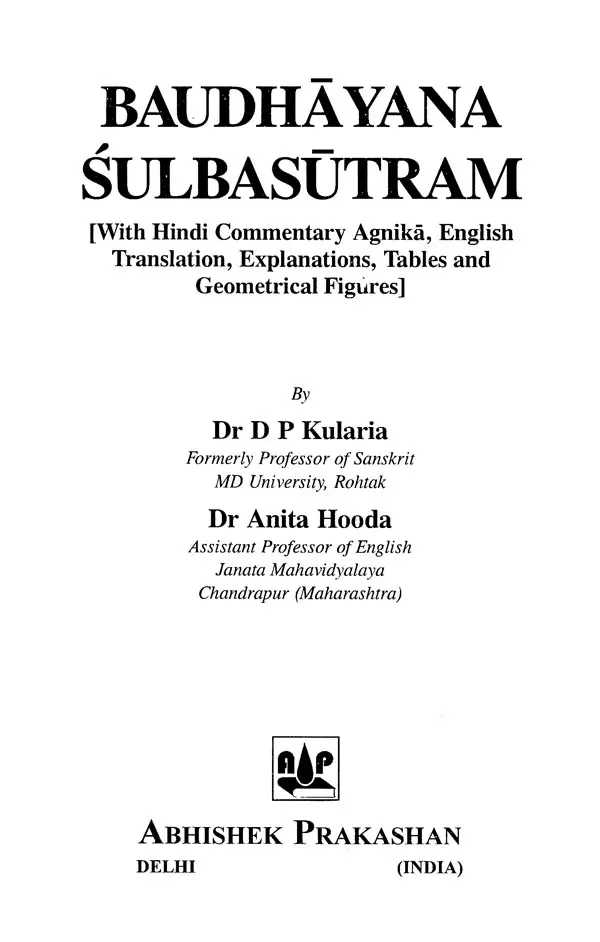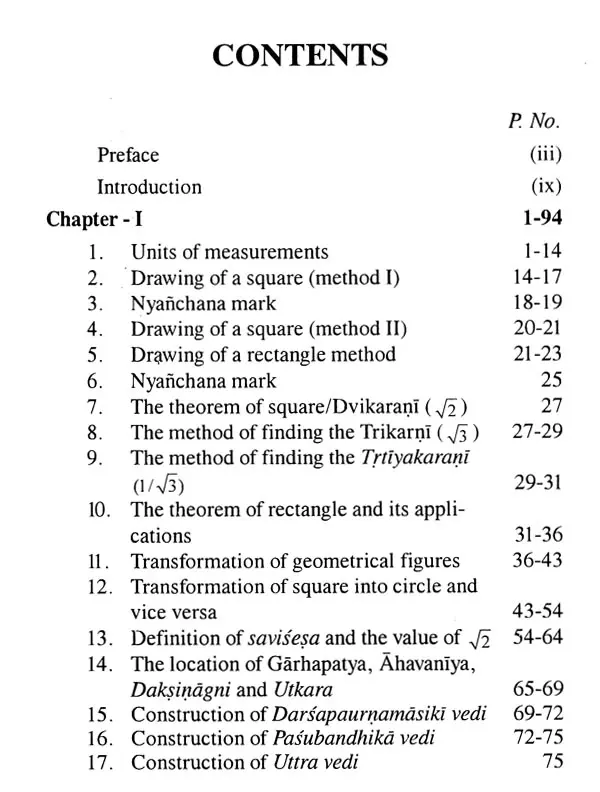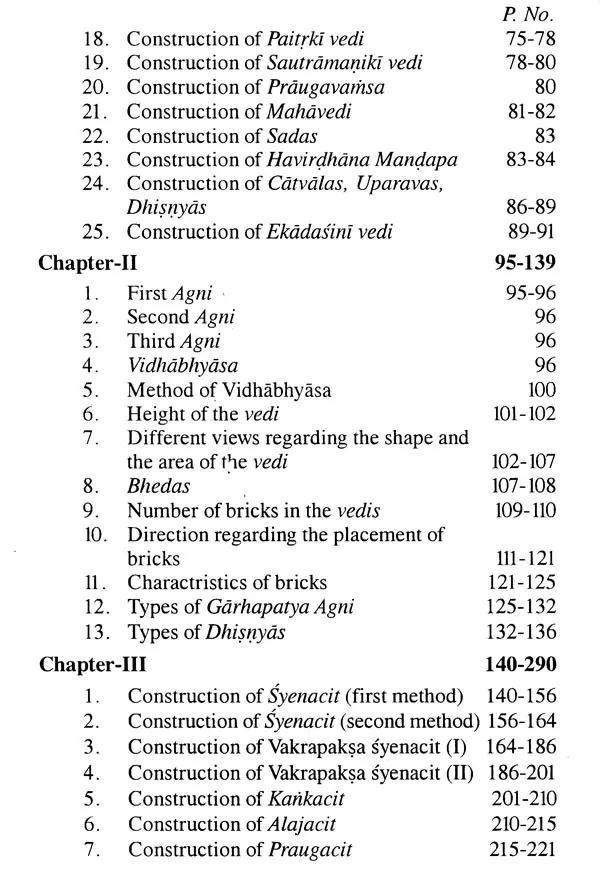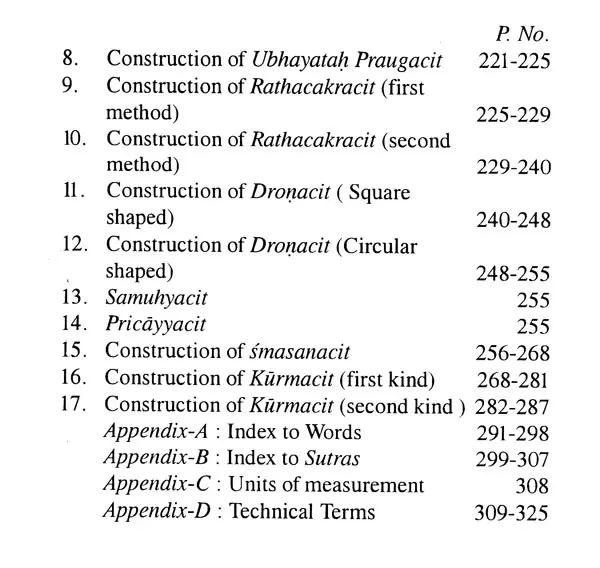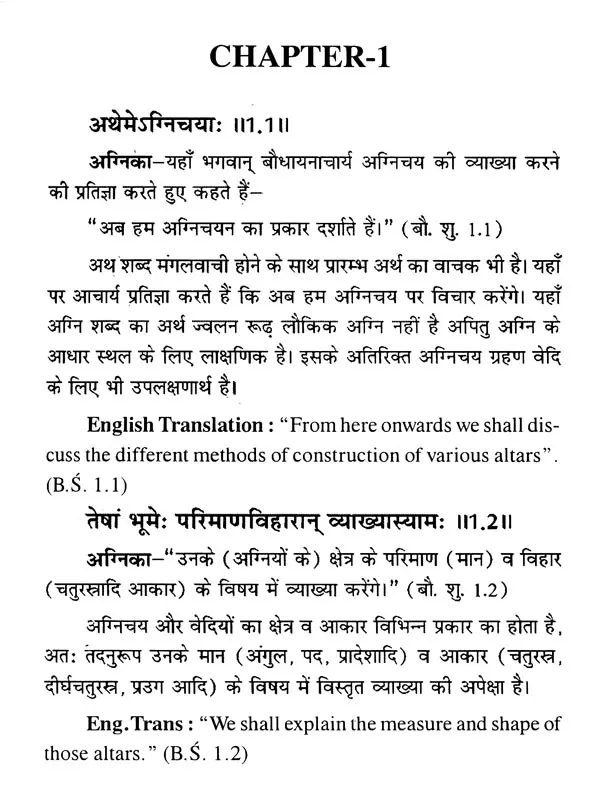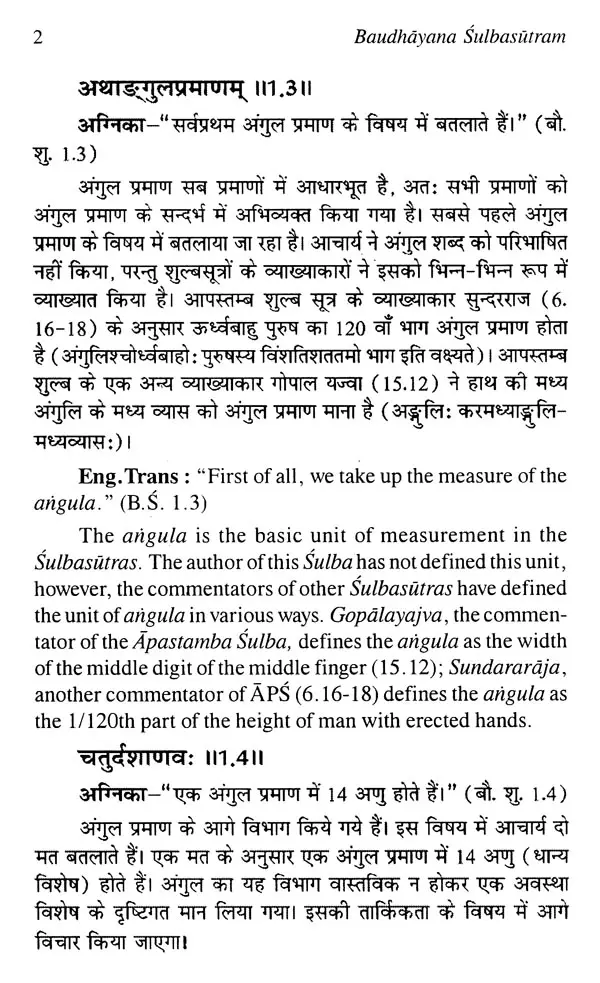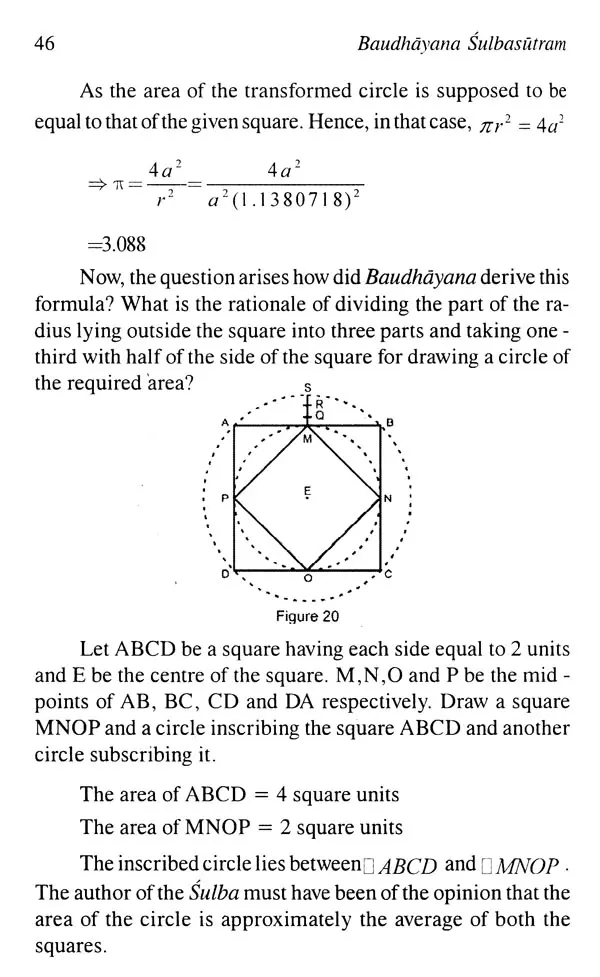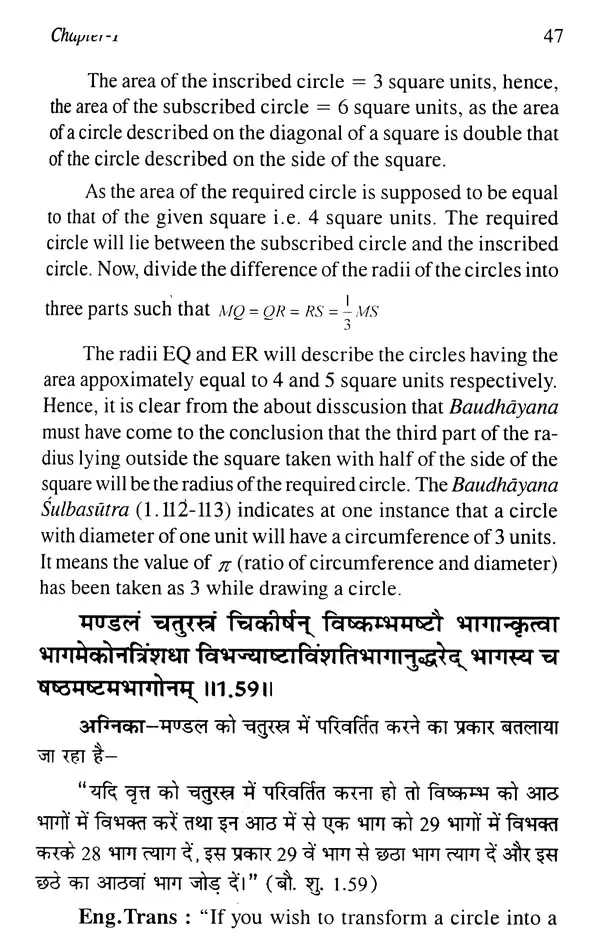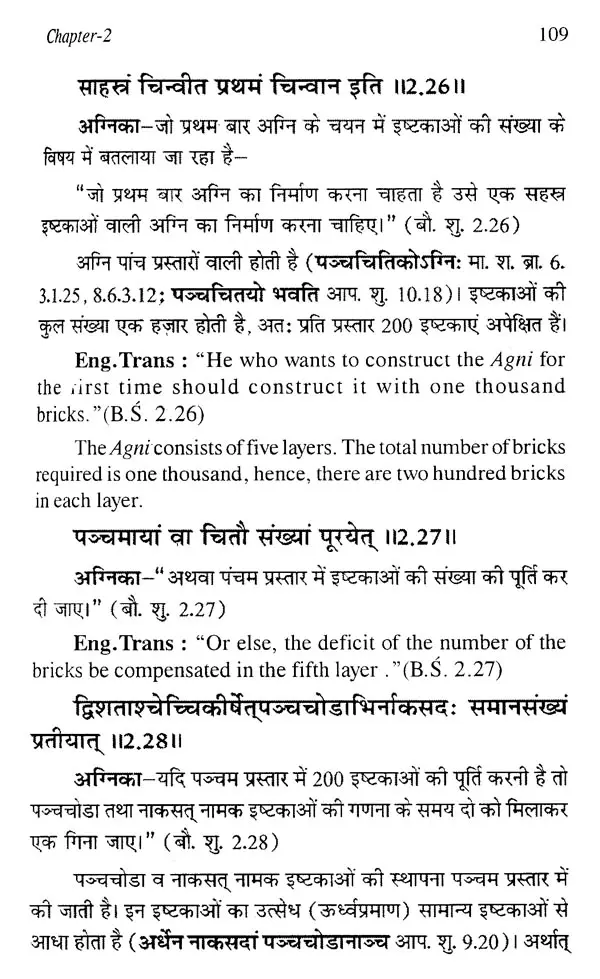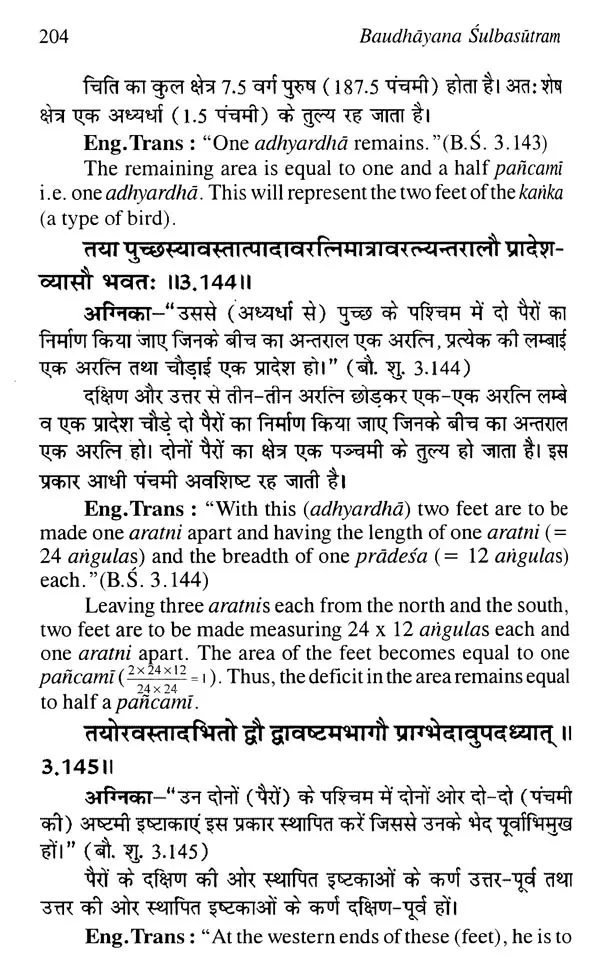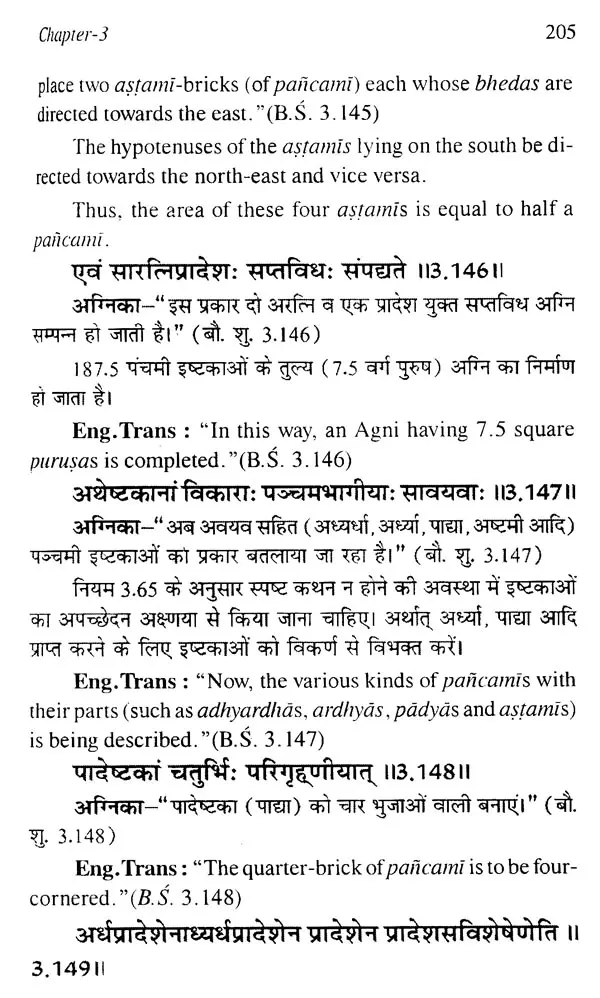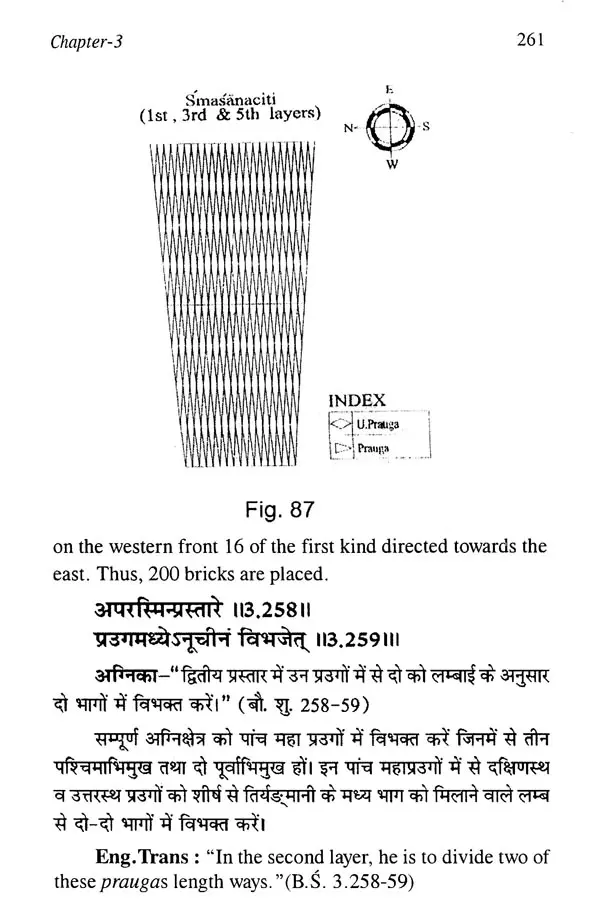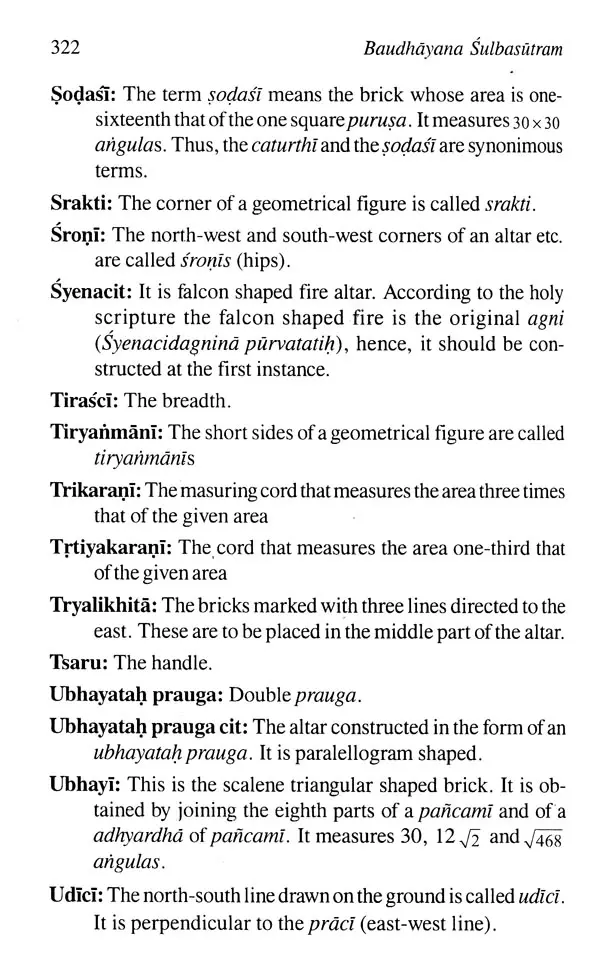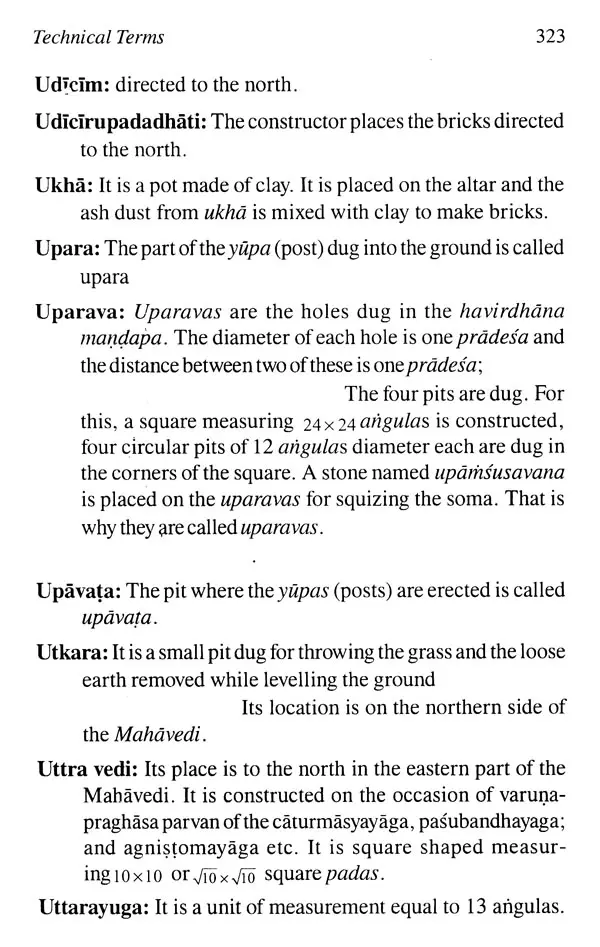
Baudhayana Sulbasutram (With Hindi Commentary Agnika, English Translation, Explanations, Tables and Geometrical Figures)
Book Specification
| Item Code: | UAI610 |
| Author: | D.P. Kularia and Anita Hooda |
| Publisher: | ABHISHEK PRAKASHAN, DELHI |
| Language: | Sanskrit Text with Hindi and English Translation |
| Edition: | 2018 |
| ISBN: | 9788183901628 |
| Pages: | 324 |
| Cover: | HARDCOVER |
| Other Details | 9.00 X 6.00 inch |
| Weight | 590 gm |
Book Description
Appendix-A-Index to words Appendix-B-Index to Sutra Appendix-C-Units of Measurement and Appendix-D-Technical Terms.
A Hindi commentary Agni and English translation aphorisms have been provide along with the tables and geo-metrical figures so that the students as well as the scholars may understand easily the purport of the author of the Sulbasutra.
Anita Hooda is an Assistant Professor of English, Janta Mahavidyalaya, Chandrapura, Maharashtra. She did MA (Eng.) from Kurushetra University, Kurushetra (HR) and PhD from Ch. Charan Singh University (Meerut) She did PG Diploma in Journalism and Mass Communication. She has Published several papers in National and Inter-national Journals.
The Vedas played a pivotal role in mauling the Indian culture. The Yajurveda proved to be a fountain head of the Vedic ritualism and a vast literature in the form of the Srautasutras . came into vogue to record the detailed procedure required for the performance of various Yajnas. The Sulbasutras being the part of Srautasutras deal with the geometry of ritual enclosures which are essential for the performance of various sacrifices. As the adhvaryu, the priest representing the Yajurveda, makes arrangements for the paraphernalia required for the accomplishment of the sacrifices, hence, all the Sulbasutras belong to the Yajurveda.
In the present book, the sulba has been produced along with the Hindi commentary Agnika, English translation, explanation, tables and geometrical figures. A sincere effort has been made to explain the sutras in a simple way so that the purport of the author of the Sulbasutra is conveyed to the readers. The rationale underlying the formulas given in the sulba has been discussed threadbare in the light of antiquity so that the justice may be meted out to the ancient seers of the ritual tradition. The geometrical figures have been provided for clarity and understanding of the various concepts, shapes and kinds of various ritual enclosures. The tables showing the placer of bricks in the construction of various Vedas and cities have b incorporated. There are four appendices in the book - In to words, Index to sutras, Units of Measurements, and Technical Terms.
We express our deep gratitude to Abhishek Prakashan RR Printers for their valuable service.
The valuable suggestions from the readers are invited that the infirmities, if any, may be removed in future.
The person who' was expert in the science of measurement was called sulbavida and he was supposed to be well versed in numerals (samkhya), the expert in measuring (parimara), the uniform stretcher of the cord (samasutraniranchakai and the inquisitive (pariprachaka).
2. The place of the Sulbasutrasin the Vedic literature The Vedic literature can be divided into three categories, viz, 1. The Samhitas (the Rgveda, the Yajurveda, the Samaveda and the Atharveda) 2. the Brahmans and 3. the Vedangas i.e. tale six auxiliary lures of the Vedas, viz, Sikst: (the science of pronunciation), Chanda (metric), vyakarana (grammar), Nirukta (etymology), Jyotisa (astronomy) and Kalpa (rituals). The Srautasutras being one of the three ingredients of the Kalpasutras, viz., the Srautasutras, the Grhyasutras and the Dharma sutras form an important part of the Vedic literature.
The Grhyasutras deal with the domestic rites. The Dharma sutras delve into the matters concerning the economic life, polity, government, civil and criminal law. The Srautasutras deal with the Vedic rites in a systematic and detailed manner strictly following the Samhitas and the Brahmanas.
The Sulbasutras are the important part of the Srautasutras and are the manuals of the methods of measurement and construction of Vedas, cities, mandapas etc. for the performance of the sacrifices.
3. The Number of the Sulbasutras
All the extant Sulbasutras belong to the Yajurveda, the reason being that it was the duty of the adhvaryu and his associates to provide the required paraphernalia for the performance of the sacrificial rituals. In a sacrifice, four priests, viz, hota, adhvaryu, udgata and brahma, play important roles. The hota represents the Rgveda, the adhvaryu the Yajurveda, the udgata the Samaveda and the brahma supervises the functioning of the rituals.
Book's Contents and Sample Pages
